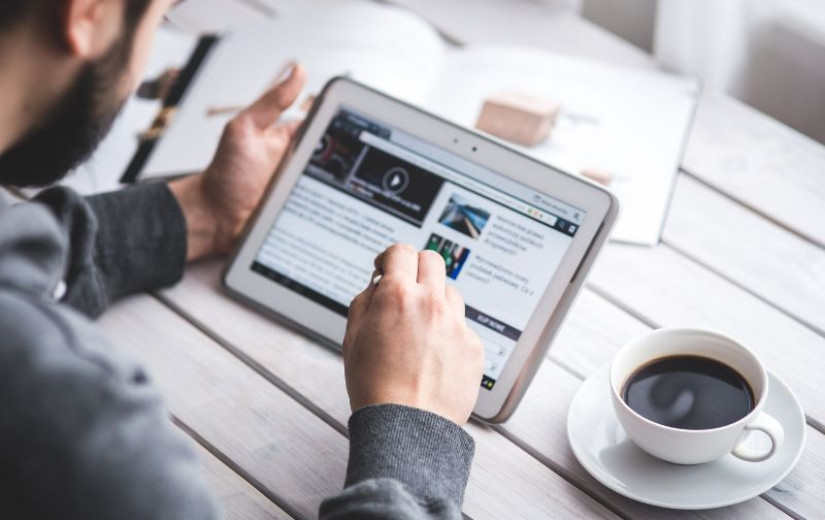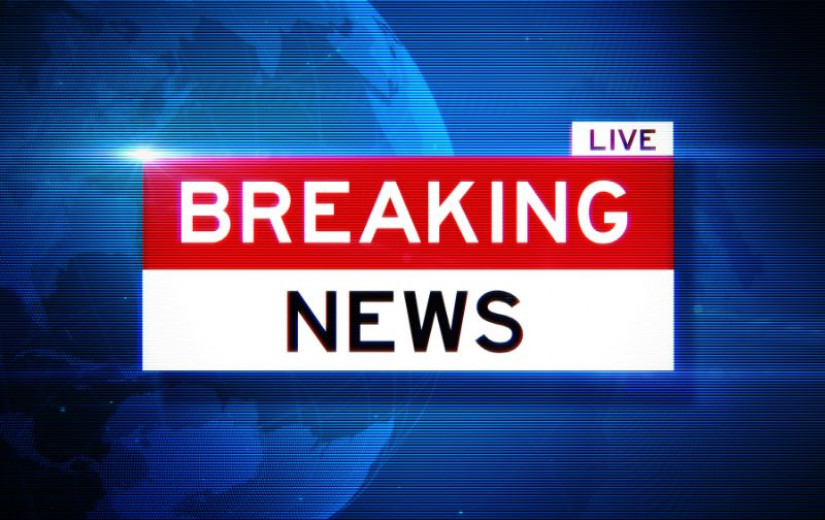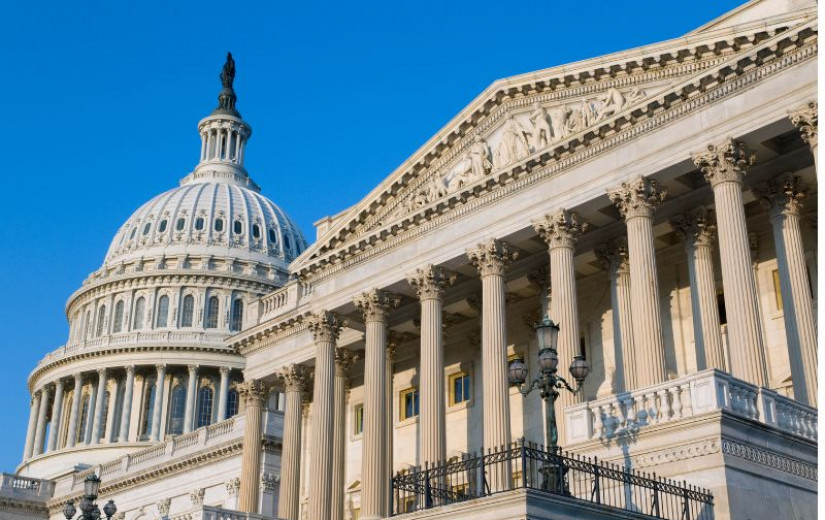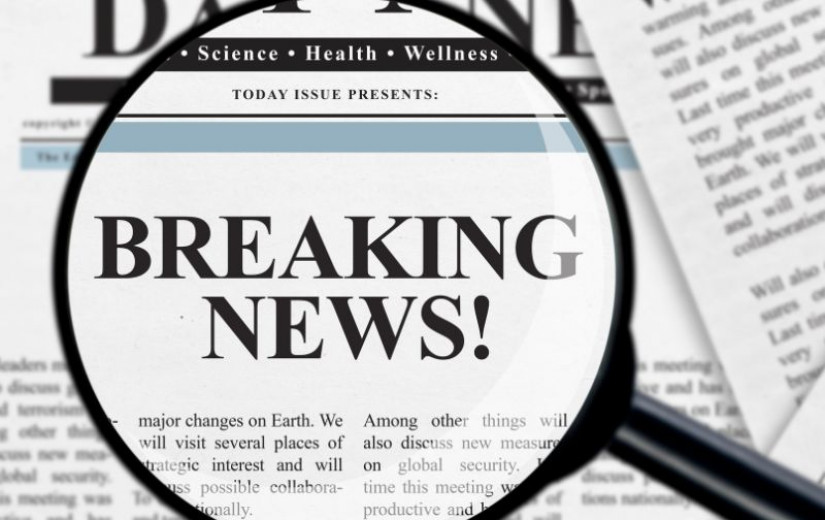
The center of the tech universe seems to believe that Trump’s tariff whiplash is nothing compared with what they see coming from AI.

On a Wednesday morning last month, I thought, just for a second, that AI was going to kill me. I had hailed a self-driving Waymo to bring me to a hacker house in Nob Hill, San Francisco. Just a few blocks from arrival, the car lurched toward the other lane—which was, thankfully, empty—and immediately jerked back.
That sense of peril felt right for the moment. As I stepped into the cab, Federal Reserve Chair Jerome Powell was delivering a speech criticizing President Donald Trump’s economic policies, and in particular the administration’s sweeping on-again, off-again tariffs. A day earlier, the White House had claimed that Chinese goods would be subject to overall levies as high as 245 percent when accounting for preexisting tariffs, and the AI giant Nvidia’s stock had plummeted after the company reported that it expected to take a quarterly hit of more than $5 billion for selling to China. The global economy had been yanked in every direction, nonstop, for weeks. America’s tech industry—an engine of that system, so reliant on overseas labor and hardware—seemed like it would be in dire straits.
Yet within the hacker house—it was really a duplex—the turmoil could be forgotten. The living space, known as Accelr8, is a cohabitat for early-stage founders. Residents have come from around the world—Latvia, India, Japan, Italy, China—to live in one of more than a dozen rooms (“tiny,” an Accelr8 co-founder, Daniel Morgan, told me), many of which have tech-inspired names: the “Ada Lovelace Room,” the “Zuck Room,” the “GPT-5 Room.” Akshay Iyer, who was sitting on a couch when I walked in, had launched his AI start-up the day before; he markets it as a “code editor for people who don’t know how to code.” In the kitchen, a piece of paper reading Wash your pans or Sam Altman will get you was printed above a photo of the OpenAI CEO declaring, in a speech bubble, that he eats children.
For a certain type of techie in the Bay Area, the most important economic upheaval of our time is the coming of ultrapowerful AI models. With the help of generative AI, “I can build a company myself in four days,” Morgan, who’d previously worked in sales and private equity, said. “That used to take six months with a team of 10.” The White House can do whatever it wants, but this technological revolution and all the venture capital wrapped up in it will continue apace. “However much Trump tweets, you better believe these companies are releasing models as fast,” Morgan said. Founders don’t fear tariffs: They fear that the next OpenAI model is going to kill their concept.
John Hendrickson: What I found in San Francisco
I heard this sentiment across conversations with dozens of software engineers, entrepreneurs, executives, and investors around the Bay Area. Sure, tariffs are stupid. Yes, democracy may be under threat. But: What matters far more is artificial general intelligence, or AGI, vaguely understood as software able to perform most human labor that can be done from a computer. Founders and engineers told me that with today’s AI products, many years of Ph.D. work would have been reduced to just one, and a day’s worth of coding could be done with a single prompt. Whether this is hyperbole may not matter—start-ups with “half-broken” AI products, Morgan said, are raising “epic” amounts of money. “We’re in the thick of the frothiest part of the bubble,” Amber Yang, an investor at the venture-capital firm CRV, told me.
There were also whispers about the stock market and the handful of high-profile tech figures who have criticized Trump’s economic policies. Yang told me that she had heard of investors advising start-ups to “take as much capital as you can right now, because we don’t know how the next few years will play out.” But around the Bay, the concerns I heard mostly positioned tariffs and stricter immigration enforcement as a rough patch, not a cataclysm. The industry’s AI growth would continue, tech insiders told me: It would speed through volatile stocks, collapsing commerce, a potential recession, and crises of democracy and the rule of law. Silicon Valley’s exceptionalism has left the rest of the country behind.
Along highways and street corners, on lampposts and public transit across the Bay Area, promises of an AI-dominated future are everywhere. There are advertisements for automated tools for compliance, security, graphic design, customer service, IT, job-interview coaching, even custom insoles—and, above all, AI products that promise to speed the development of still more powerful AI products. At an AI happy hour at a beer garden in the Mission neighborhood, I listened to a group of start-up founders passionately debate whether today’s approach to AI will produce “superintelligence.” (That the industry will achieve AGI went unquestioned.) A few days later, Evan Conrad, a co-founder of the San Francisco Compute Company, a start-up that rents out AI computing chips, suggested, when I asked about Trump’s tariffs, that I might be the one with too narrow a focus. “Why aren’t you more freaked out about the other stuff?” he asked.
The release of ChatGPT, in late 2022, began a frenzy over AI products. Founders and executives promise that the technology will cure cancer, solve climate change, and rapidly grow the world economy. “People just don’t start non-AI companies anymore,” Morgan said. The wealthiest firms—Amazon, Alphabet, Meta, Microsoft—have together spent hundreds of billions of dollars building the infrastructure needed to train and run AI models. Only a year ago, the AI industry was still “in the mid- to early stages of the gold rush,” Yang told me at the time, over coffee. Then an investor at Bloomberg Beta, she had risen to local fame for popularizing the nickname “Cerebral Valley” for the Hayes Valley neighborhood, dubbed as such for its abundance of tech start-ups and hacker houses. “There’s still so much that you can make from just slight automations,” she said. On that same day, I went to OpenAI’s offices, where, on a floor with rooms named after core human inventions (“Clock,” “Fire,” and so on), a conference room was called “AGI.” A year later, the gold rush is mature, and the term AGI is common enough that an advertisement in San Francisco International Airport offers to help customers overcome “bottlenecks to AGI.”
The day after visiting Accelr8, I made my way to another hacker house: one story in a brick and terra-cotta building rented by Finn Mallery as his home and office for his start-up, Origami Agents, which builds AI tools for sales teams. I was instructed to take my shoes off, and then we settled in the kitchen to talk beside Costco-size bags of potatoes, a Kirkland tub of pink salt, and two sinks, one spotless and the other full of dirty pans.
Mallery graduated from Stanford last year and told me that his computer-science classmates were all hungry to launch or join AI start-ups; he knew of at least eight undergraduates who’d dropped out to do so. “The bar is so much lower” to found a company than when he started school, Mallery said, because AI can take care of anything administrative (which might otherwise require paying accountants, lawyers, and the like). Origami Agents could lower the bar further: The company’s goal, Mallery said, is to build a “superintelligent system of sales agents that can do all the work a team of humans can do.” He was one of several entrepreneurs who mentioned an internal memo by Tobi Lutke, the CEO of Shopify, mandating that his employees use AI. “Before asking for more Headcount and resources,” Lutke wrote, “teams must demonstrate why they cannot get what they want done using AI.” Working at a major tech firm, Mallery said, seems almost less secure than starting your own company.
AI development, in this view, matters far more than traditional drivers and markers of economic development. “If OpenAI’s next model is horrible or plateaus, that would be much more concerning,” Mallery said. Founders and investors repeated the same thing: Tech start-ups are inherently risky and are not expected to turn a profit for a decade; they raise enough money to have “runway” precisely in the event of a rough stretch or a wider recession. The tech industry admittedly doesn’t “think very hard about how bad things could get,” Conrad told me. “Our job is to raise this,” he said, pointing upward—to raise the ceiling on how prosperous and enjoyable society can be. “Your job”—media, banks, elected officials, the East Coast—“is to protect the floor.”
Several investors I met suggested that a recession might even be an opportunity for AI firms. “Companies aren’t going to hire; they’re going to roll out AI,” Jeremiah Owyang, a partner at the VC firm Blitzscaling Ventures, told me. “It’s not a good story to tell, but it’s true.”
I met Owyang outside Stanford’s Jen-Hsun Huang Engineering Center, named after the CEO of Nvidia. Hundreds of entrepreneurs, software engineers, VCs, and students had gathered there in April for the 17th edition of an AI event Owyang hosts called the “Llama Lounge.” The energy was giddy: pizza, demo tables, networking. “Eighty to 90 percent of use cases are still out there,” Chet Kumar, an investor at the AI-focused firm Argonautic Ventures, told me that evening—meaning, in other words, that ChatGPT and all the rest weren’t even beginning to make good on AI’s potential. A few minutes later, I met James Antisdel, a former product manager at Google who recently launched his own company, CXO AGI, which aims to help businesses manage AI programs that act as employees. “With tariffs, if it becomes harder to move around the world, agents are going to become even more important,” Antisdel told me. “You can’t get a human, so get AI.”
Read: A disaster for American innovation
I heard this in Palo Alto, in San Francisco, in Menlo Park. “With the economy bad in the U.S. and around the world, you can make businesses more efficient,” Joanathan McIntosh, an AI-start-up founder, told me. Less than two weeks later, the CEO of Duolingo, the language-learning app, put out a memo telling employees that they were required to use generative AI and that “headcount will only be given if a team cannot automate more of their work.” Anthropic, on the same day, published research showing that 79 percent of user interactions with its AI coding interface, Claude Code, were some form of “automation”—human software engineers getting AI to directly complete a task for them. Moderna, the pharmaceutical giant, has combined its human resources and tech departments to determine which jobs are better done by people or AI. Should the nation enter a recession, and hundreds of thousands or millions of Americans lose employment, this time, they may never get their jobs back.
The day after the Llama Lounge, I traveled to the sidewalk outside OpenAI’s new offices (not the ones with the “AGI” conference room) in San Francisco, only minutes from the water, where a small group dressed in red shirts that read STOP AI was gathering. When I arrived, there were eight protesters and eight police officers nearby; at a previous demonstration, a few protesters were arrested for trespassing. Attendees were angry about potential automation, copyright infringement, affronts to human dignity, and a robot apocalypse. “This company is putting people’s lives at risk,” Sam Kirchner, the lead organizer, said in a short speech. The protesters then performed a skit in which Kirchner played Sam Altman and the other protesters beggars; faux Altman, seemingly at random, chose whether to dole out fruit from behind a sign that read Universal Basic Income—a fixed monthly payment that the real Altman has suggested as a solution to widespread AI-induced job loss. Nobody, other than the police officers and a small number of reporters, was there to watch or listen.
Not everyone was blocking out the White House with visions of AGI, of course. Outside Coupa Café, a Palo Alto coffee shop known for tech-founder and VC meetings, I sat down with Mike Lanza and Katrina Montinola, who have spent decades in start-ups and major tech firms around Silicon Valley, and they were irate over the Trump administration’s antagonistic approach to immigration and international collaboration. “The ones who have the gumption to come over here are admirable,” Montinola, a Filipina immigrant, told me. “That personality is what makes America great.” Lanza was more direct: “I have that American exceptionalism,” he told me, passed down from his father and his Italian-immigrant grandparents. “And now I’m embarrassed.”
Of all the whispers of discontent I heard in the techno-optimistic valley, this was by far the most frequent. Silicon Valley would not be the success story it is, people told me more than once, without the immigrants who have driven innovation here. At the Accelr8 hacker house, miniature national flags from around the world were strung across the ceiling, crisscrossing between the doors. America’s global standing, Lanza told me, matters for the tech industry’s talent pool, investors, and customers.
At the same café, Mustafa Mohammadi, a robotics and AI-simulation consultant, explained to me how Trump’s policies risk dooming the robot revolution—the path for AI to transition from screens to the real world. Much of the best robot hardware and highest-quality robot data, as well as many of the most talented engineers, come from China, Mohammadi said. In the past, collaboration between the United States and China formed a robotics flywheel, he continued, spinning his finger in a circle. Should Trump continue down his current path—tariffs, immigration crackdowns, racist remarks—“you’ll break the fucking wheel.” At a recent dinner with AI-software engineers, many of whom were Chinese, Mohammadi told me, his friends were furious that Vice President J. D. Vance had described trading with China as buying from “Chinese peasants.” For all that Silicon Valley has to offer, these engineers are souring on America, he said—before long, if paid more to do the same job in China, “they will go back.”
Even the most confident AI founders I spoke with were beginning to worry about international researchers and entrepreneurs not being able, or no longer wanting, to enter the United States. Just over a week after my meeting with Mohammadi, an OpenAI researcher named Kai Chen was denied a U.S. green card. Chen had been instrumental to one of the firm’s most advanced models, GPT-4.5. “What is america doing,” one outraged colleague wrote on X. “Immigration makes america strong,” another chimed in. “We should not be denying entry to brilliant AI researchers.” (A few hours later, Noam Brown, the OpenAI researcher who had announced Chen’s predicament, posted an update: It seemed to have been a paperwork error, which a spokesperson for OpenAI told me is also the company’s “initial assessment.” Chen is working from Canada until the issue is resolved.)
The tech industry’s bubble, then, remains permeable. Shortly after visiting the hacker houses, I found myself on the eighth floor of the Phelan Building, a century-old triangular office in downtown San Francisco. It holds the headquarters of Flexport, which coordinates supply-chain logistics and freight shipments for billions of dollars of goods each year; its CEO, Ryan Petersen, has watched and felt the effects of Trump’s tariffs. Freight bookings from China to the U.S. were down by 50 percent, Petersen told me at the time. Roughly “90 days from now, you’re going to see mass shortages across the United States,” he said.
Petersen suggested that I talk with Dan Siroker, the founder of the AI-gadget start-up Limitless, and a few days later, we spoke over Zoom. Limitless was feeling the full force of Trump’s tariffs—the firm manufactures in China and had accepted many preorders at $59 each, but the duties had raised manufacturing costs to nearly $190 per unit. Siroker seemed to think that Limitless will be fine, because it had shipped enough inventory pre-tariffs to survive and will recover costs on subscriptions. But if the tariffs had come six months ago, he said, “it would be much harder.”
Trump’s policies, Petersen told me, reminded him “of central planning of the economy at the level you’re used to seeing from a Stalinist state.” At the bar of Rosewood Sand Hill hotel, a VC meetup in Menlo Park reminiscent of a White Lotus resort, Boyd Fowler, the chief technology officer at the semiconductor manufacturer OmniVision, lamented that his lawyers were working “night and day” on the tariffs. The legendary tech investor Paul Graham has likened the tariffs to China’s Great Leap Forward. Of course, Petersen said, all of this was only if nothing changed—and in his view, these tariffs were “so bad” that “there’s no way that it just stays like this.” That was in mid-April. Just yesterday, the U.S. and China announced a 90-day reduction in their tariffs—“Get ready for a big shipping boom,” Petersen wrote on X—although without any long-term trade deal or material concessions from either side.
Again and again, I heard the assumption that every Trump policy was reversible and would be reversed, in no small part because of the “really good, smart tech people” in the administration, as Rahul Kayala, a former Apple and Microsoft employee who recently co-founded an AI start-up, told me. He noted David Sacks and Sriram Krishnan, two influential tech investors advising the White House. Lanza, despite his fury with Trump’s immigration policy and tariffs, also cited Sacks. Anybody “who’s got a brain in the Trump administration is biting their tongue about these tariffs,” he said. “Everyone is assuming this is a reversible decision still,” Conrad said. Investors, Yang told me, had not changed their long-term plans.
Even before the latest pause, the White House had already announced some tariff exemptions for tech products, including Apple devices and some duties affecting carmakers. But the reversals don’t appear to be rational, let alone part of any plan. Even then, founders and investors told me that no matter what happens with tariffs and the broader economy, AI is clearly a priority for Trump. The White House has issued statements to this effect—but has simultaneously gutted funding for the basic science research that today’s generative-AI products depend on, put international scientific and technological collaboration at risk, and issued tariffs that could make it more expensive to build and power data centers in the United States.
This particular strain of optimism—a sense that tariffs and restricted immigration are terrible, but a stronger conviction that the tech industry can survive, or even thrive, anyway—was everywhere. I thought back to the demonstration in front of OpenAI’s offices, which had attracted a single counterprotester. Vikram Subbiah, a former SpaceX software engineer working on an AI start-up, was there to defend the technology, and he’d unfurled a red banner that read Stop Protesting AI. “My job is at more risk than they are,” Subbiah told me. If even the most automatable software engineers support AI, he argued, everyone should. Siroker, of the AI-gadget start-up, said something similar. Trade policy in the 1990s and 2000s “was a tiny blip compared to this big sucking sound, which is the internet,” Siroker told me. “And that big sucking sound today is AI.” Even the coronavirus pandemic, he said, “is a micro trend by comparison.”
In Silicon Valley, where the technological future is the center of today’s world, the president is easily reduced to memedom—not the most powerful man on the planet, but just some guy trolling everybody on the internet. The real power, the big sucking sound, is apparently in California. Trust the autopilot to stay the course. Where that takes us exactly, no one can say.
About the Author
Matteo Wong is a staff writer at The Atlantic.










